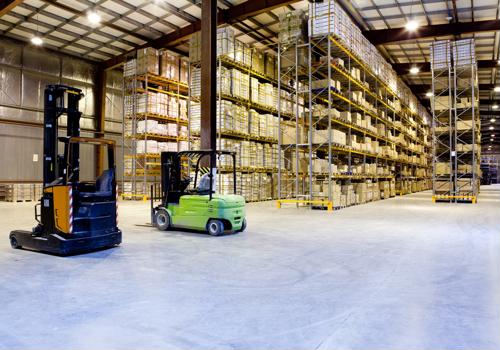
How 5G is revolutionizing the logistics industry
By Max BurkhalterFebruary 9, 2021
Transport and logistics have become increasingly complex over the past year, forcing supply chains to completely transform to meet new challenges. 5G is becoming more available across global markets, enabling companies to shift to a data-driven mindset. However, to leverage this technology to its fullest potential for predicting future performance and optimizing operational efficiency, the collection and analysis of enormous amounts of data must be completed in real time.
How 5G is changing the logistics landscape
5G delivers data speeds that are exponentially faster than 3G or 4G as well as reduced latency, which provides a highly responsive network. The logistics industry is ready for transformation and the pathway has been cleared for internet-enabled smart devices. By utilizing this technology, the logistics supply chain is poised for all processes to become faster, more reliable and safety-conscious.
Digitized logistics
Older cellular networks used by mobile operators are stretched to the limit with minimal availability of usable radio channels across the current spectrums. Smart devices including autonomous vehicles, temperature monitoring sensors, RFID tags and GPS devices all require a connection to the internet and bandwidth to transmit data, and their needs may soon overwhelm localized capabilities.
Fortunately, 5G resolves the issue of limited device space on existing networks, as it is capable of connecting far more users at any given time. Just one meter of coverage with 5G can support over 1,000 devices. Speeds can be up to 10 gigabytes per second, which is 100 times faster than 4G. This level of support provides for the connection of an almost unlimited amount IoT devices, allowing scaling to be swift and secure.
Minimized theft risks
Consumers have become accustomed to having the ability to track everything in real time, from their takeout order to important, personal documents. However, the international transport of goods lacks when it comes to this demand. Transparency on a global scale has seemed out of reach.
One of the largest challenges for the logistics industry has been supply chain visibility. Supply Chain Management Review notes that 5G and IoT are capable of revolutionizing the sector with connected trackers that monitor real-time location and the condition of shipments, pallets and individual goods throughout the entire supply chain at will.
By eliminating blind spots during transport, globally utilized tracking and monitoring can increase consumer confidence, assist in on-demand shipping situations when time is of the essence and reduce risks associated with high value shipments. All of this can be accomplished with smart tracking devices that monitor location, shock, temperature, light exposure, humidity and lock tampering.
Autonomous vehicles
Another technological opportunity is the advancements being made in self-driving systems. While the commercialization of self-driving cars is still the dream of many consumers, autonomous trucks can transform the logistics industry, making it safer, swifter and less dependent on human error. Road freight will become a lean and efficient operation, shifting away from a labor intensive industry to one controlled by smart vehicles and smart roads.

Intelligent transport ecosystems, combined with robotic automation in warehouses and packaging facilities, may be capable of near complete automation of the supply chain in future years. The primary obstacles in the way of autonomous vehicle fleet adoption include a lack of infrastructure, government regulation inconsistencies, concern regarding the safety of autonomous vehicles and resistance against the idea of an autonomous driving revolution.
Augmented reality
According to DHL, augmented reality options such as vision picking, accelerated packaging and labeling and visual indications of cargo movements, reroutes, changes and unloading can be significantly enhanced when a 5G network is providing support. These applications are improving user experience, reducing chance of human error and boosting efficiency of warehouse operations by empowering staff and management.
AR and 5G also deliver a reduced lag and shorten time to completion for assembly and repair processes. Remote teams using hands-free AR glasses can utilize software to display visual instructions for assemblies and repairs in real time. This saves money by reducing manpower costs and training time as well as the transportation of machinery to another facility.
Intelligent transportation systems
5G also lends itself to safer, faster port operations by providing a digitized platform made for innovation.
Sensors, cameras and other interconnected devices communicate across a network and relay instructions to unmanned ground vehicles. Loading and unloading becomes automatic, and cargo inventory information is broadcast electronically and remotely to gated systems for immediate access to controlled areas. These systems only work if there's uninterrupted connectivity and large swaths of bandwidth to allow real-time, consistent communication. The speed and performance of 5G networks make this possible, turning ports into almost entirely automated hubs.
Embracing 5G is possible only with a staunch networking system supported by industrial grade equipment. Contact Perle about our transportation solutions today.



